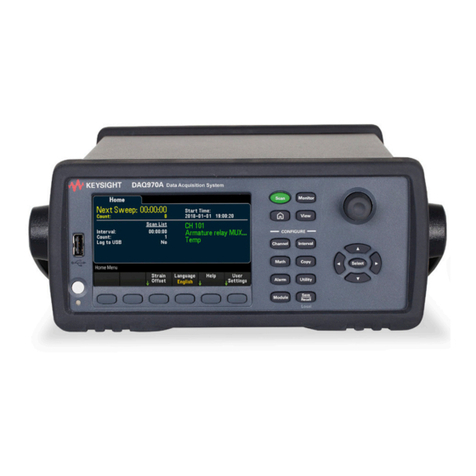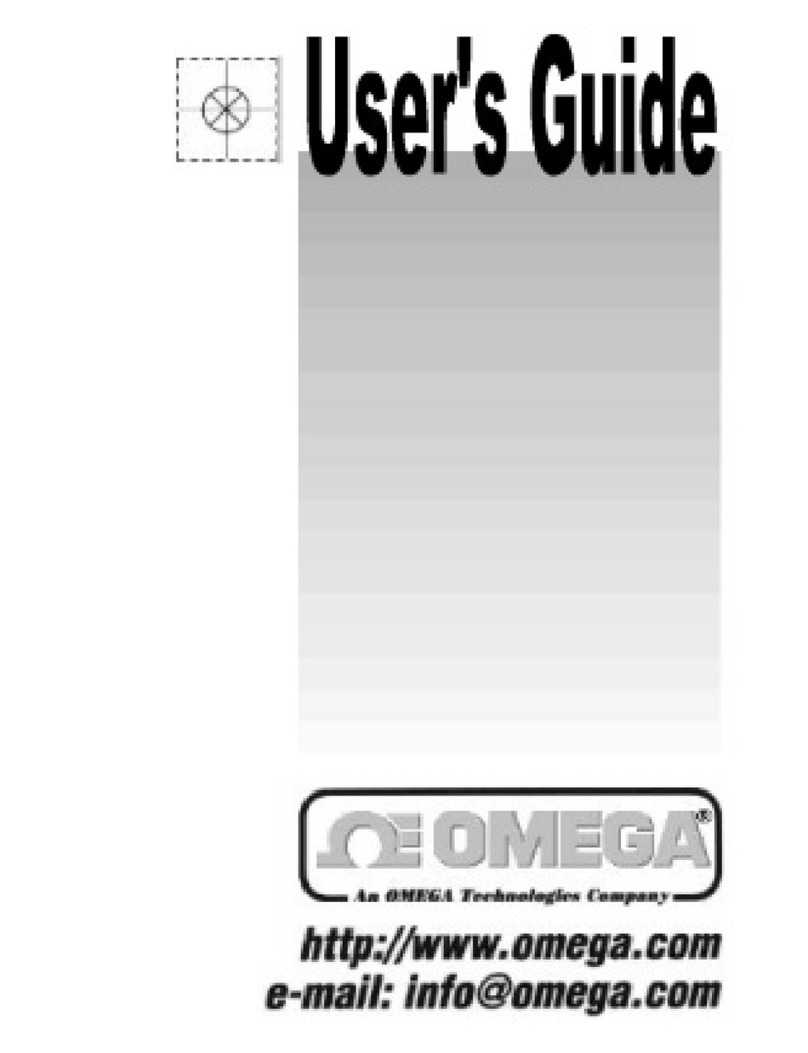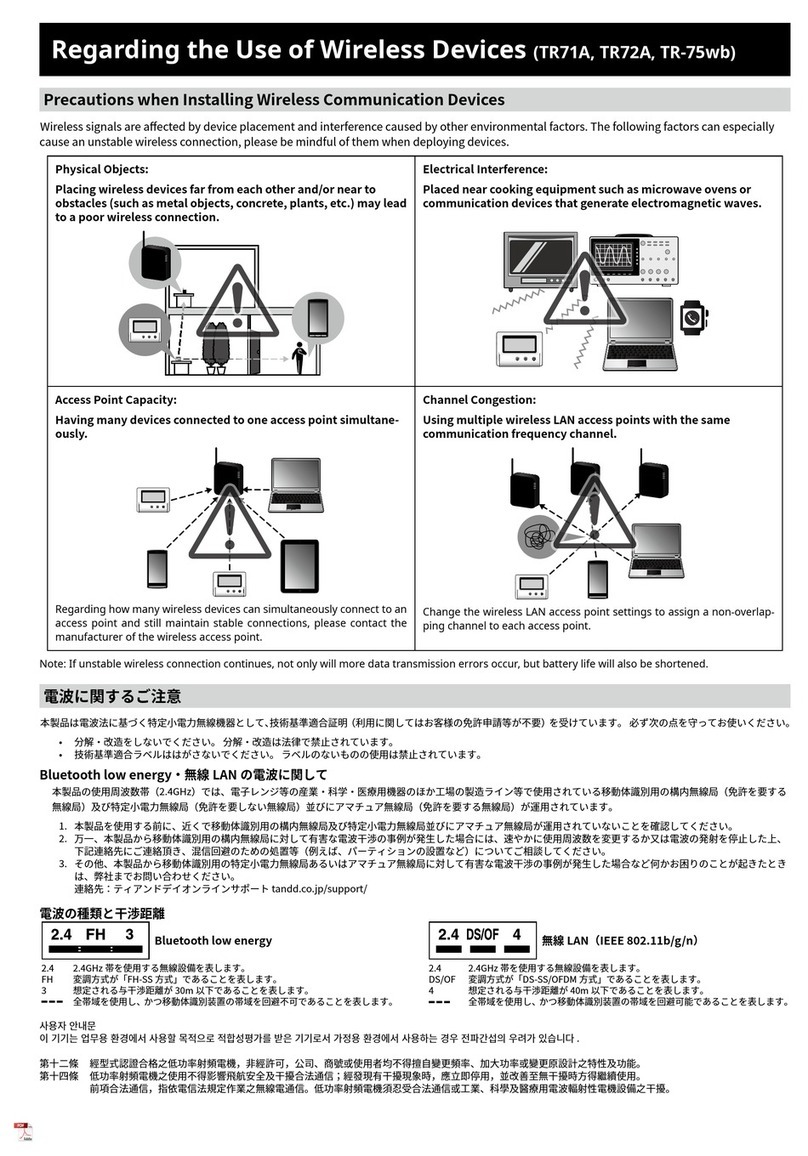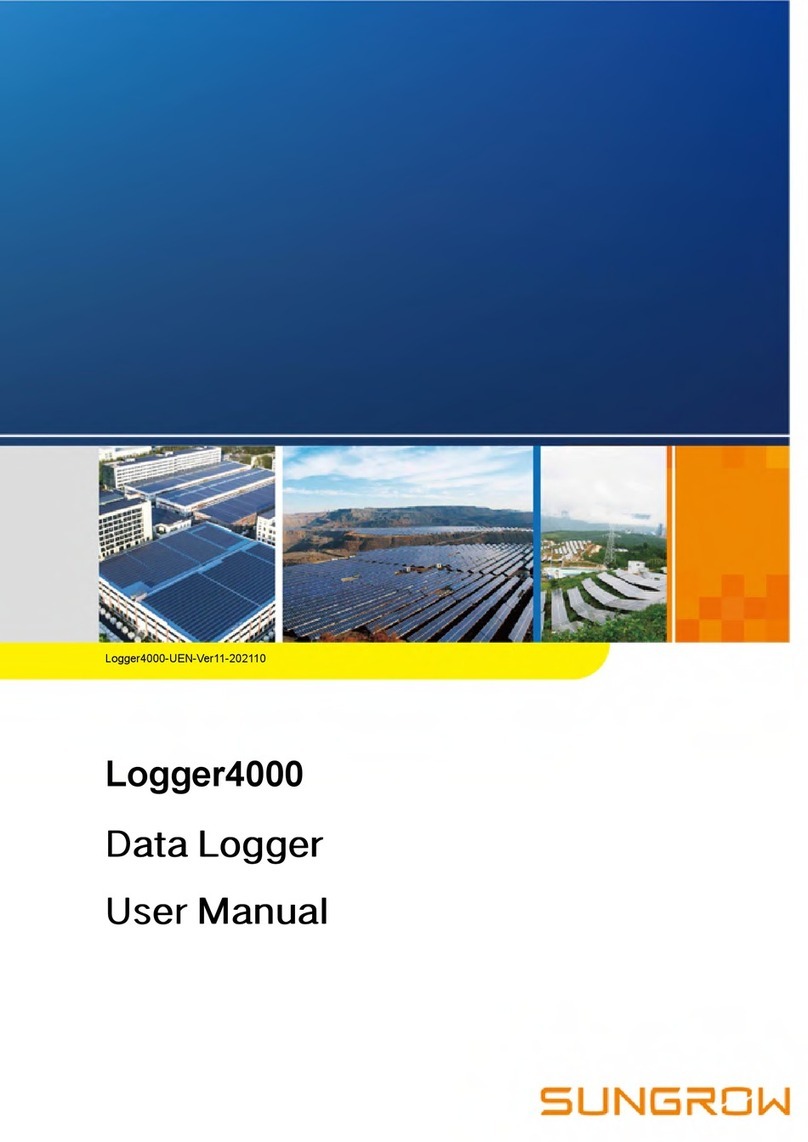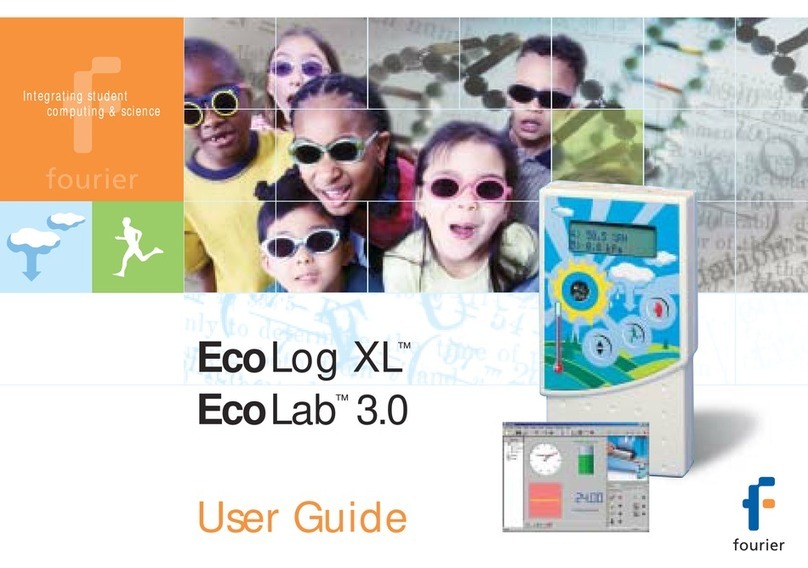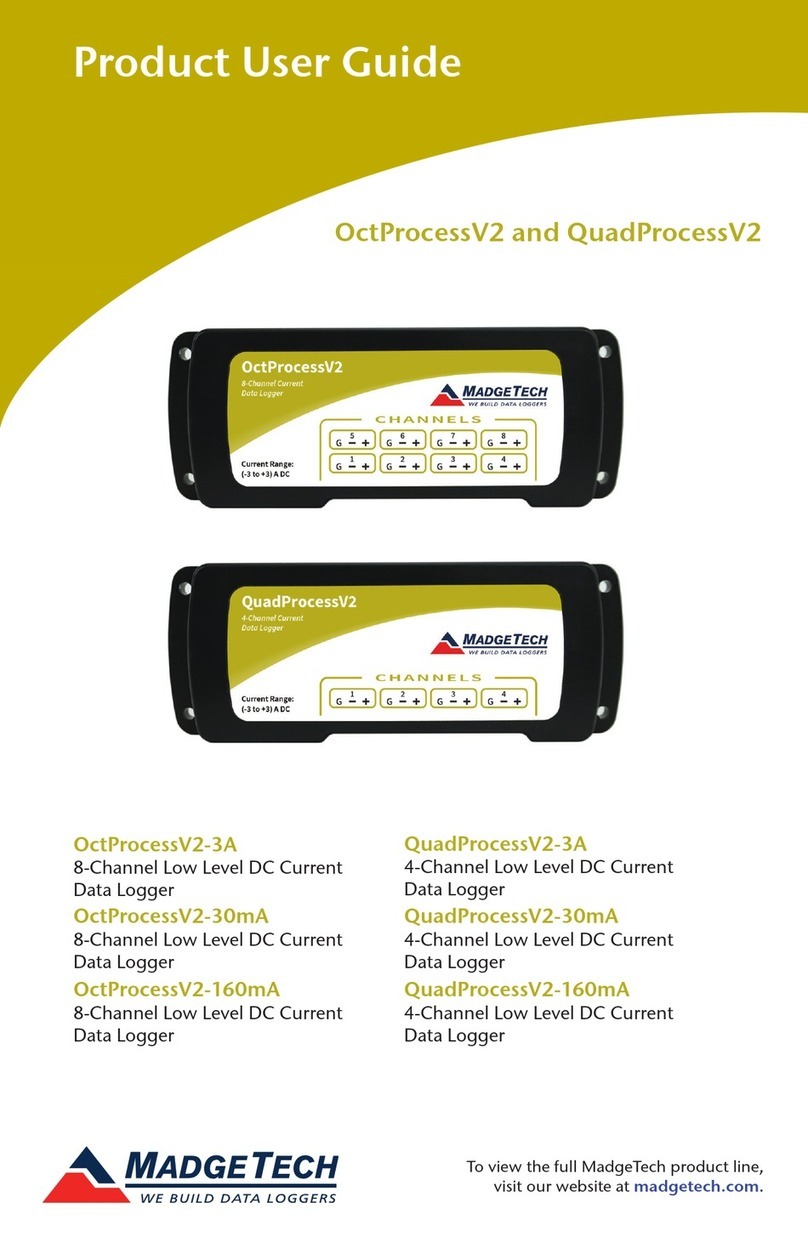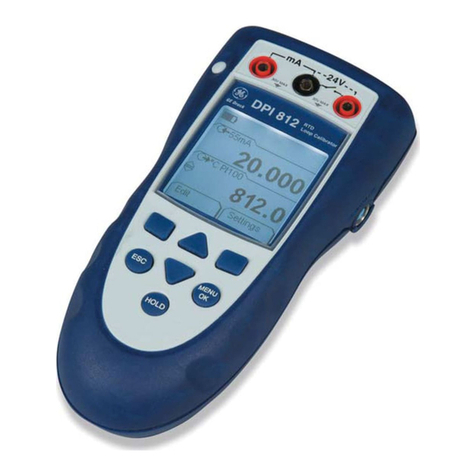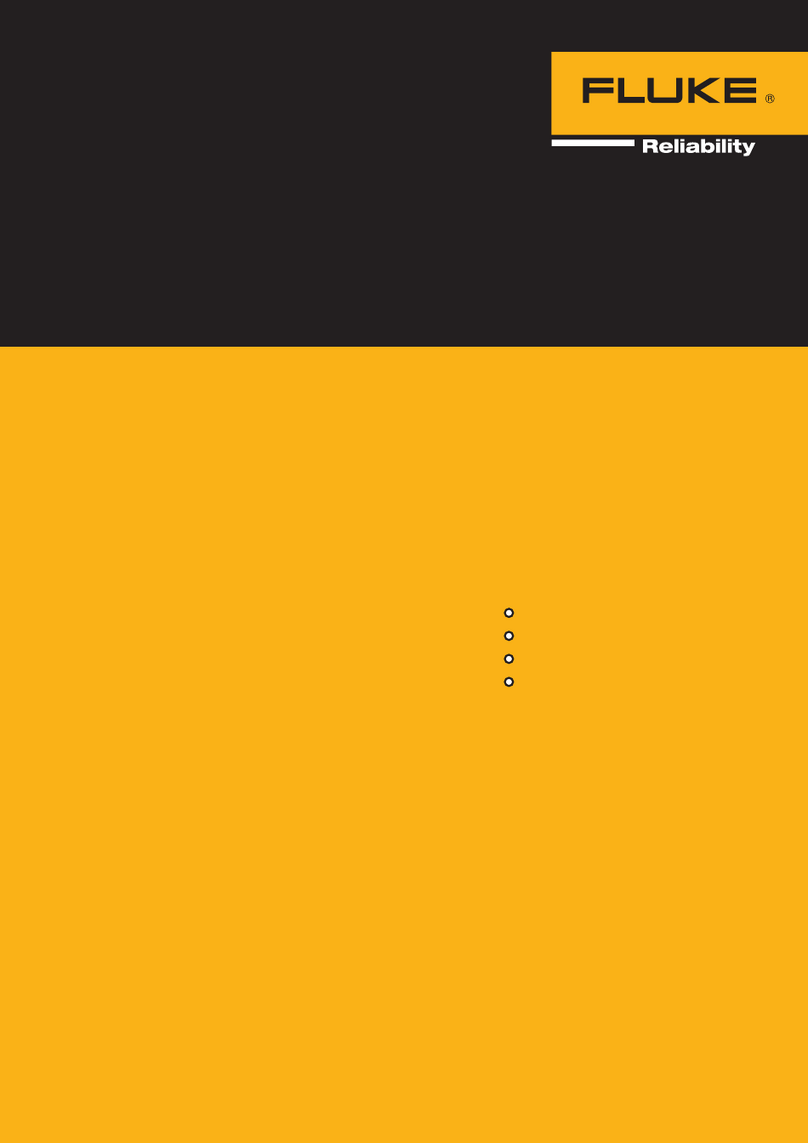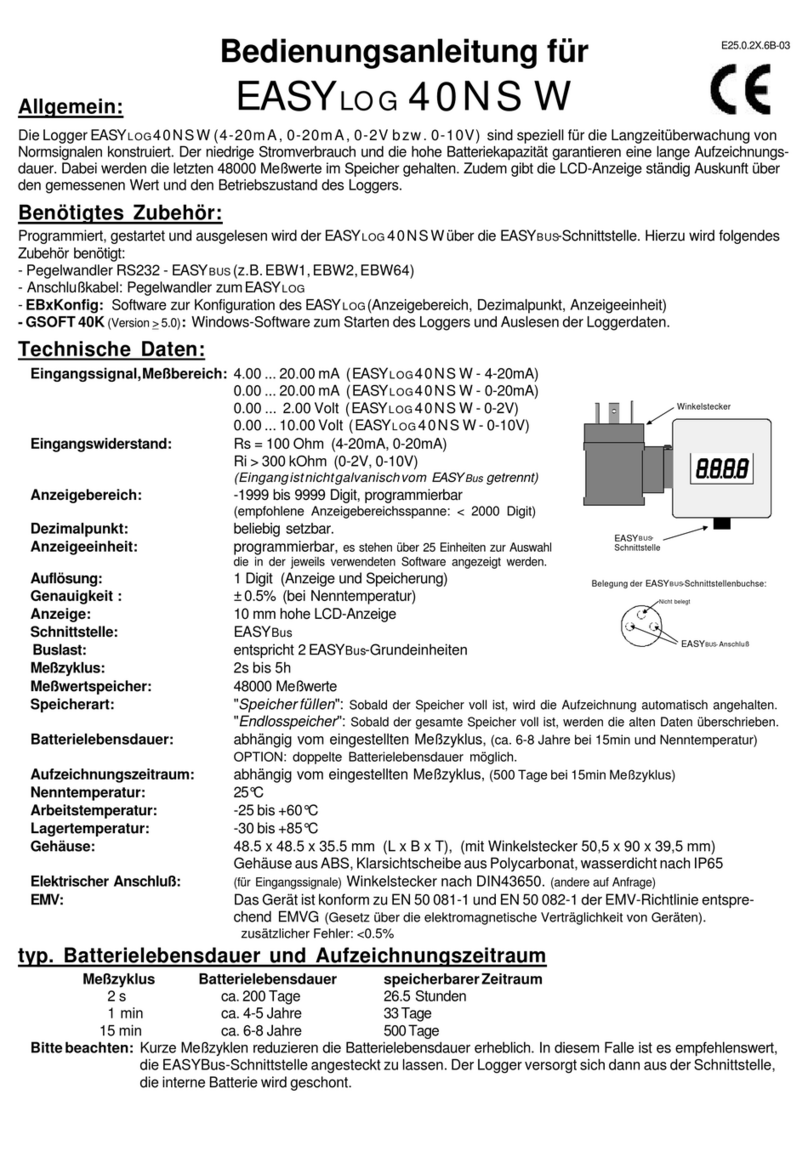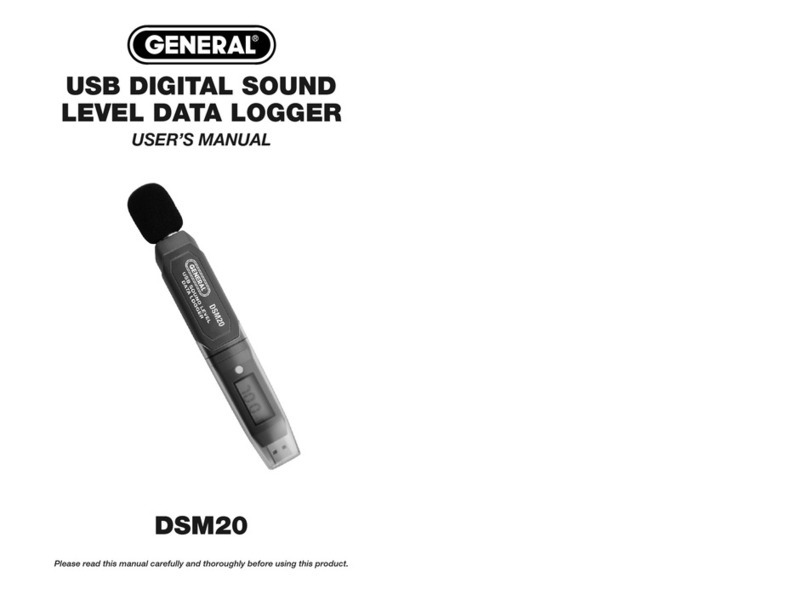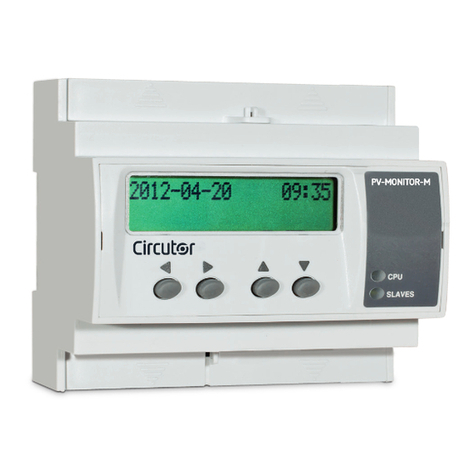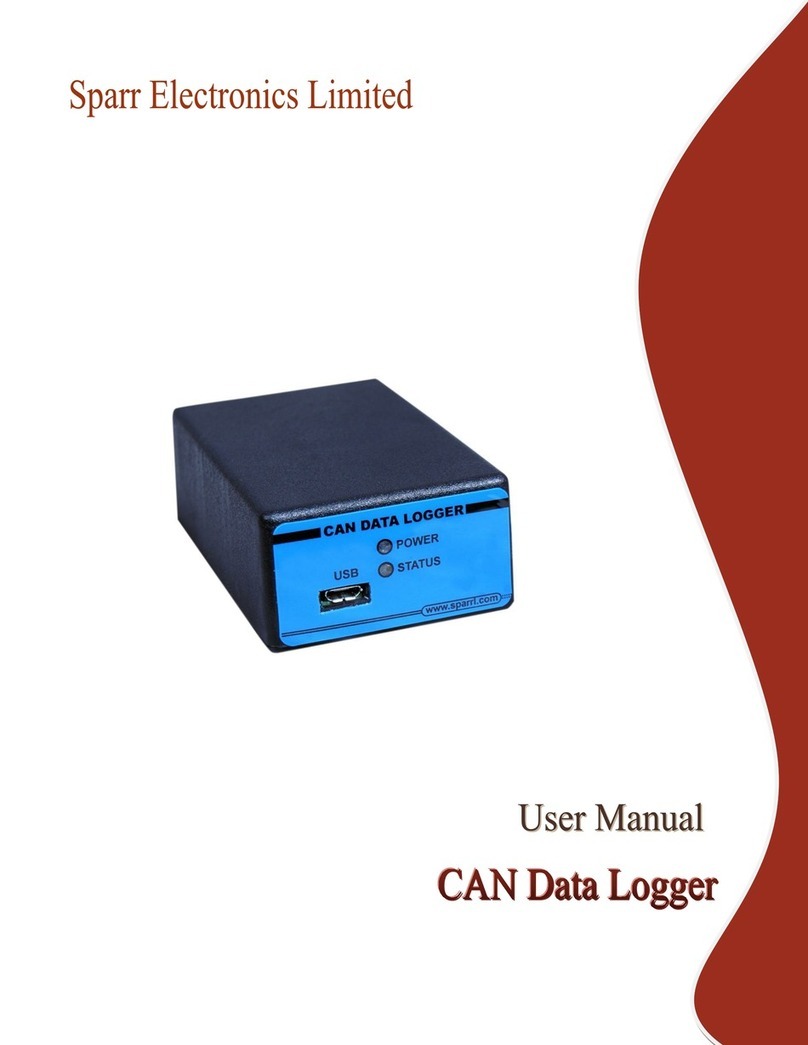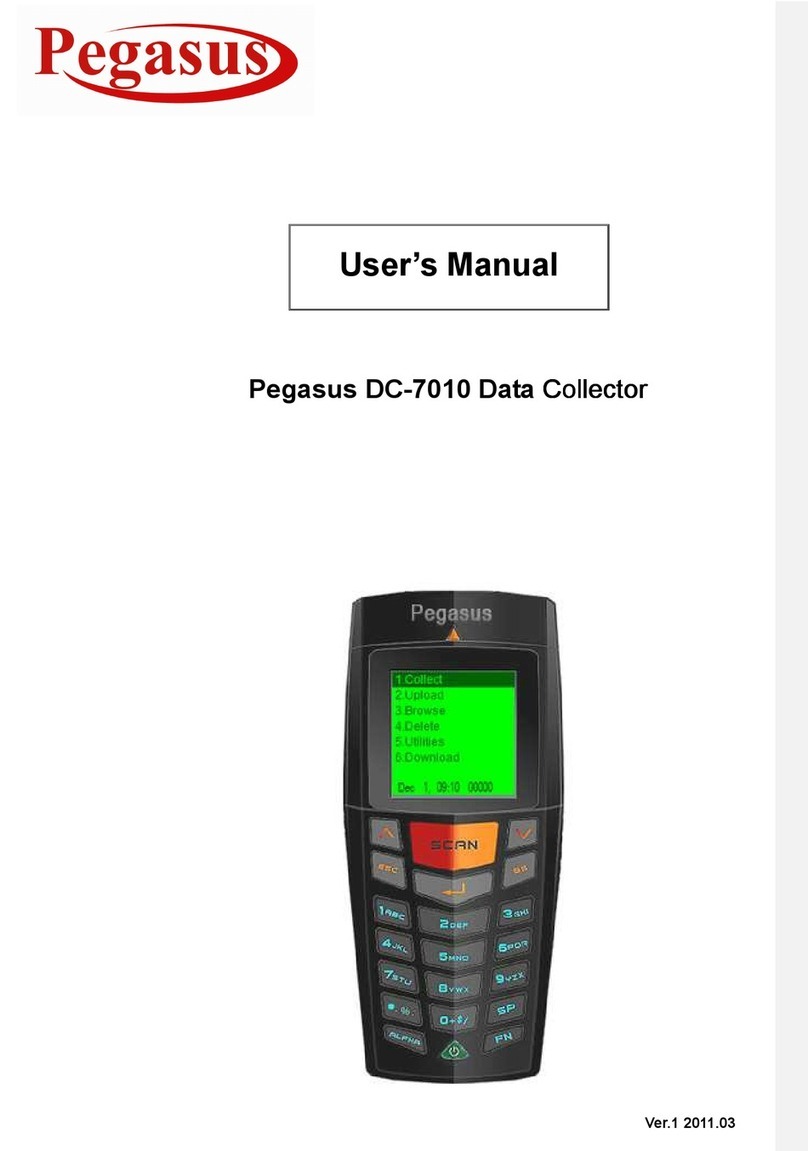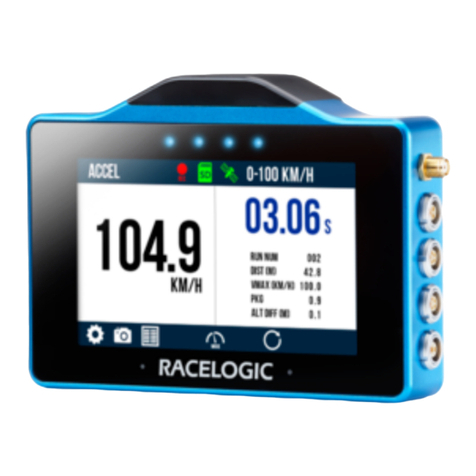Keysight Technologies DAQ970A User manual

Security Guide
Keysight DAQ970A
Data Acquisition System

TOC
Notices 2
Copyright Notice 2
Manual Part Number 2
Edition 2
Published by 2
Software Revision 2
Warranty 2
Technology Licenses 3
Restricted Rights Legend 3
Waste Electrical and Electronic Equipment (WEEE) 3
Declarations of Conformity 3
Safety Information 4
Warranty 5
Where to find the latest information 5
Is your product software up-to-date? 5
Contacting Keysight Sales and Service Offices 6
Products Covered by this Document 7
Document Purpose 7
Security Terms and Definitions 8
Instrument Memory 9
Summary of Memory Declassification Procedures 11
Memory Sanitization Procedure 13
Secure Erase All 13
User and Remote Interface Security Measures 14
Administrative Password 14
Remote Access Interfaces 14
USBdevice MTP (Driverless) connection device 14
Front panel USB host port 15
Front panel display 15
How to disable the front panel during remote operation 15
Calibration regulation 15
Firmware update regulation 15
Procedure for Declassifying a Faulty Instrument 16
References 17

Notices
Copyright Notice
© Keysight Technologies, 2018
No part of this manual may be reproduced in any form or by any means (including electronic storage and retrieval or
translation into a foreign language) without prior agreement and written consent from Keysight Technologies as
governed by United States and international copyright laws.
Manual Part Number
DAQ97-90003
Edition
Edition 1, July 2018
Published by
Keysight Technologies
Bayan Lepas Free Industrial Zone
11900 Bayan Lepas, Penang
Malaysia
Software Revision
The latest firmware is available at www.keysight.com/find/DAQ970Afirmware.
The latest product documentation is available at www.keysight.com/find/DAQ970Amanuals.
A portion of the software in this product is licensed under terms of the General Public License Version 2 (GPLv2). The
text of the license and source code can be found at www.keysight.com/find/GPLV2.
This product uses Microsoft Windows CE. Keysight highly recommends that all Windows-based computers
connected to Windows CE instruments use current anti-virus software. For more information, see
www.keysight.com/find/DAQ970A.
Warranty
THE MATERIAL CONTAINED IN THIS DOCUMENT IS PROVIDED "AS IS", AND IS SUBJECT TO BEING CHANGED,
WITHOUT NOTICE, IN FUTURE EDITIONS. FURTHER, TO THE MAXIMUM EXTENT PERMITTED BY APPLICABLE
LAW, KEYSIGHT DISCLAIMS ALL WARRANTIES, EITHER EXPRESS OR IMPLIED, WITH REGARD TO THIS MANUAL
AND ANY INFORMATION CONTAINED HEREIN, INCLUDING BUT NOT LIMITED TO THE IMPLIED WARRANTIES OF
MERCHANTABILITY AND FITNESS FOR A PARTICULAR PURPOSE. KEYSIGHT SHALL NOT BE LIABLE FOR ERRORS
OR FOR INCIDENTAL OR CONSEQUENTIAL DAMAGES IN CONNECTION WITH THE FURNISHING, USE, OR
PERFORMANCE OF THIS DOCUMENT OR OF ANY INFORMATION CONTAINED HEREIN. SHOULD KEYSIGHT AND
THE USER HAVE A SEPARATE WRITTEN AGREEMENT WITH WARRANTY TERMS COVERING THE MATERIAL IN THIS
2Keysight DAQ970A Security Guide

DOCUMENT THAT CONFLICT WITH THESE TERMS, THE WARRANTY TERMS IN THE SEPARATE AGREEMENT
SHALL CONTROL.
Technology Licenses
The hardware and/or software described in this document are furnished under a license and may be used or copied
only in accordance with the terms of such license.
Restricted Rights Legend
If software is for use in the performance of a U.S. Government prime contract or subcontract, Software is delivered
and licensed as "Commercial computer software" as defined in DFAR 252.227-7014 (June 1995), or as a
"commercial item" as defined in FAR 2.101(a) or as "Restricted computer software" as defined in FAR 52.227-19
(June 1987) or any equivalent agency regulation or contract clause. Use, duplication or disclosure of Software is
subject to Keysight Technologies’ standard commercial license terms, and non-DOD Departments and Agencies of
the U.S. Government will receive no greater than Restricted Rights as defined in FAR 52.227-19(c) (1-2) (June
1987). U.S. Government users will receive no greater than Limited Rights as defined in FAR 52.227-14 (June 1987)
or DFAR 252.227-7015 (b)(2) (November 1995), as applicable in any technical data.
Waste Electrical and Electronic Equipment (WEEE)
This product complies with the European WEEE directive marketing requirement. The affixed product label (see
below) indicates that you must not discard this electrical/electronic product in domestic household waste.
Product Category: With reference to the equipment types in the European WEEE directive Annex 1, this product is
classified as "Monitoring and Control instrumentation" product. Do not dispose in domestic household waste.
To return unwanted products, contact your local Keysight office, or see
http://about.keysight.com/en/companyinfo/environment/takeback.shtml for more information.
Declarations of Conformity
Declarations of Conformity for this product and for other Keysight products may be downloaded from the Web. Go
to https://regulations.about.keysight.com/DoC/default.htm, you can then search by product model number to
find the latest Declaration of Conformity.
Keysight DAQ970A Security Guide 3

Safety Information
The CAUTION sign denotes a hazard. It calls attention to an operating procedure, or the like, which, if not correctly performed or
adhered to, could result in damage to or destruction of part or all of the product. Do not proceed beyond CAUTION sign until the
indicated conditions are fully understood and met.
The WARNING sign denotes a hazard. It calls attention to a procedure, practice, or the like, which, if not correctly performed or
adhered to, could result in personal injury. Do not proceed beyond a WARNING sign until the indicated conditions are fully
understood and met.
The NOTE sign denotes important information. It calls attention to a procedure, practice, condition or the like, which is essential to
highlight.
4Keysight DAQ970A Security Guide

Warranty
This Keysight Technologies product is warranted against defects in material and workmanship for a period of one
year from the date of shipment. During the warranty period, Keysight Technologies will, at its option, either repair or
replace products that prove to be defective. For warranty service or repair, this product must be returned to a
service facility designated by Keysight Technologies. Buyer shall prepay shipping charges to Keysight Technologies,
and Keysight Technologies shall pay shipping charges to return the product to Buyer. For products returned to
Keysight Technologies from another country, Buyer shall pay all shipping charges, duties, and taxes.
Where to find the latest information
Documentation is updated periodically. For the latest information about these products, including instrument
software upgrades, application information, and product information, see the following URL:
http://www.keysight.com/find/DAQ970A
To receive the latest updates by email, subscribe to Keysight Email Updates:
http://www.keysight.com/find/MyKeysight
Information on preventing instrument damage can be found at:
http://www.keysight.com/find/PreventingInstrumentRepair
Is your product software up-to-date?
Periodically, Keysight releases software updates to fix known defects and incorporate product enhancements. To
search for software updates for your product, go to the Keysight Technical Support website at:
http://www.keysight.com/find/techsupport
Keysight DAQ970A Security Guide 5

Contacting Keysight Sales and Service Offices
Assistance with test and measurement needs, and information on finding a local Keysight office, is available on the
Internet at:
http://www.keysight.com/find/assist
If you do not have access to the Internet, please contact your field engineer.
In any correspondence or telephone conversation, refer to the instrument by its model number and full serial
number. With this information, the Keysight representative can determine whether your unit is still within its
warranty period.
6Keysight DAQ970A Security Guide

Products Covered by this Document
Product family name Product name Model number
Data Acquisition Unit Data Acquisition System DAQ970A
Data Acquisition Unit 20-Channel FET Multiplexer Module DAQM900A
Data Acquisition Unit 20-Channel Armature Multiplexer Module DAQM901A
Data Acquisition Unit 16-Channel Reed Multiplexer Module DAQM902A
Data Acquisition Unit 20-Channel Actuator/General-Purpose Switch Module DAQM903A
Data Acquisition Unit 4×8 Two-Wire Matrix Switch Module DAQM904A
Data Acquisition Unit Dual 1:4 RF Multiplexer (50 Ω) Module DAQM905A
Data Acquisition Unit Multifunction Module DAQM907A
Data Acquisition Unit 40-Channel Single-Ended Multiplexer Module DAQM908A
Document Purpose
This document describes instrument security features and the steps to declassify an instrument through memory
clearing, sanitization, or removal.
For more information, go to: http://www.keysight.com/find/security.
Be sure that all information stored by the user in the instrument that needs to be saved is properly backed up
before attempting to clear any of the instrument memory. Keysight Technologies cannot be held responsible
for any lost files or data resulting from the clearing of memory. Be sure to read this document entirely before
proceeding with any file deletion or memory clearing.
Keysight DAQ970A Security Guide 7

Security Terms and Definitions
Term Definition
Clearing As defined in Section 8-301a of DoD 5220.22-M, clearing is the process of eradicating the data on media
before reusing the media so that the data can no longer be retrieved using the standard interfaces on the
instrument. Clearing is typically used when the instrument is to remain in an environment with an accept-
able level of protection.
Instrument Declassification A term that refers to procedure that must be undertaken before an instrument can be removed from a
secure environment, such as when the instrument is returned for calibration. Declassification procedures
include memory sanitization or memory removal, or both. Keysight Technologies's declassification pro-
cedures are designed to meet the requirements specified in DoD 5220.22-M, Chapter 8.
Sanitization As defined in Section 8-301b of DoD 5220.22-M, sanitization is the process of removing or eradicating
stored data so that the data cannot be recovered using any known technology. Instrument sanitization is
typically required when an instrument is moved from a secure to a non-secure environment, such as when
it is returned to the factory for calibration.
Keysight Technologies's memory sanitization procedures are designed for customers who need to meet
the requirements specified by the US Defense Security Service (DSS). These requirements are specified
in the “Clearing and Sanitization Matrix” in Section 5.2.5.5.5 of the ISFO Process Manual.
Secure Erase Secure Erase is a term that is used to refer to either the clearing or sanitization features of Keysight Tech-
nologies's instruments.
8Keysight DAQ970A Security Guide

Instrument Memory
This section contains information on the types of memory available in your instrument. It explains the size of
memory, how it is used, its location, volatility, and the sanitization procedure.
Table 1-1: Summary of instrument memory
Memory type
and size
Writable during
normal
operation?
Data retained
when
powered off?
Purpose/contents Data input
method
Location in
instrument and
remarks
Sanitization
procedure
Processor DDR3
SDRAM
256 MByte
Yes No Contains working copies of
operating system,
instrument software and
measurement data. It also
offers a RAM backed file
system.
Operating sys-
tem
Mainframe Power cycle
Parallel NAND
Flash Memory
256 MByte
Yes Yes Contains Microsoft Windows
CE Embedded Operating
System, instument firmware,
crash recovery image,
connectivity data,
FPGA configuration image
and user instrument states. It
also serves as the boot flash.
Programmed
before
installed, by
firmware oper-
ations, and by
user input
Mainframe Refer Table 1-2
I2C EEPROM
4 kByte
No Yes Contains board revision,
MAC address and serial
number.
By factory
install
Mainframe Not available
Battery-backed
SRAM
128 kByte
Yes Yes Used to save instrument
readings and instrument
state.
By user input Mainframe Refer Table 1-3
Processor FPGA
(SRAM)
2200 kbit
Yes No Used for data processing. By FPGA oper-
ations
Mainframe Power cycle
Module Pro-
cessor (FRAM)
15.5 kByte
Yes Yes Used to store processor
execution code, calibration
constants, relay counts, user
label, relay states and state
information.
By factory
install, by firm-
ware upgrade,
by firmware
operations, and
by user input
Module Refer Table 1-4
Power Processor
(FRAM)
8.5 kByte
No Yes Used to store processor
execution code.
By factory
install and by
firmware
upgrade
Mainframe Not available
Keyboard Pro-
cessor (FRAM)
8.5 kByte
No Yes Used to store processor
execution code.
By factory
install and by
firmware
upgrade
Mainframe Not available
Keysight DAQ970A Security Guide 9

Memory type
and size
Writable during
normal
operation?
Data retained
when
powered off?
Purpose/contents Data input
method
Location in
instrument and
remarks
Sanitization
procedure
Measurement
Processor (Flash)
512 kByte
No Yes Used to store processor
execution code.
By factory
install and by
firmware
upgrade
Measurement
board
Not available
Measurement
Processor
(SRAM)
98 kByte
Yes No Used for data path
processing.
By firmware
operations
Measurement
board
Power cycle
Measurement
Calibration
(EEPROM)
8 kByte
Yes Yes Contains calibration data. By user input Measurement
board
Not available
Measurement
FPGA (Flash)
1.27 Mbit
No Yes Contains logic array
configuration.
By factory
install and by
firmware
upgrade
Measurement
board
Not available
Measurement
FPGA (SRAM)
166 kbit
Yes No Used for data processing. By FPGA oper-
ations
Measurement
board
Power cycle
10 Keysight DAQ970A Security Guide

Summary of Memory Declassification Procedures
This section explains how to clear, sanitize, and remove memory from your instrument, for all classes of memory that
are writable during normal operation.
Before beginning clearing or sanitization, be sure to write down and save the information of the instrument’s
option. The Secure Erase All erases the instrument's option information and this information is essential for
successful restoration of the instrument’s operating system.
Read this entire document before using any sanitization procedure. Failure to do so may necessitate returning
the instrument to an Authorized Keysight Service Center for firmware downloads and recalibration.
Table 1-2: Parallel NAND Flash Memory
Description and purpose This memory is used to store Microsoft Windows CE Embedded Operating System, instrument firmware, crash
recovery image, connectivity data, FPGA configuration image, and user instrument states. This also serve as
the boot flash so here is no separate BIOS memory chip on the board.
Size 256 MByte
Memory clearing Front panel:
To remove individual file from the internal file system, press:
[Save Recall] >Manage Files >Action >Delete >Browse. Then select the file and press Select >Perform
Delete.
To remove all files from the internal file system, press:
[Save Recall] >Manage Files >Action >Delete >Browse. Then select Internal and press Select >Perform
Delete.
Remote interface:
To remove files and folders from the file system, send below commands:
MMEMory:DELete <file>
MMEMory:RDIRectory <folder>
For more information, see DAQ970A Programming Guide.
Memory sanitization This memory can be sanitized by following the instructions in Secure Erase All. The model number, FPGA
configuration image and the instrument firmware are retained. The connectivity data and user instrument state
are sanitized. After reboot, the connectivity data will be restored to the factory defaults.
This procedure complies with requirements in Chapter 8 of the National Instrument Security Program Oper-
ating Manual (NISPOM). This command is for users, such as military contractors, who must comply with
NISPOM. Specially, the action will fully declassify all non-volatile memory using the methods specified in the
June 28, 2007 DSS Memory Clearing and Sanitization Matrix.
Memory removal Not available
Memory validation Not available
Keysight DAQ970A Security Guide 11

Table 1-3 Battery-backed SRAM
Description and purpose Memory used to store instrument readings and instrument state. It is not cleared when power is turned off.
Size 128 kByte
Memory clearing This memory can be cleared by following the instructions in Secure Erase All.
This procedure complies with requirements in Chapter 8 of the National Instrument Security Program Oper-
ating Manual (NISPOM). This command is for users, such as military contractors, who must comply with
NISPOM. Specially, the action will fully declassify all non-volatile memory using the methods specified in the
June 28, 2007 DSS Memory Clearing and Sanitization Matrix.
Memory sanitization This memory can be sanitized by following the instructions in Secure Erase All.
This procedure complies with requirements in Chapter 8 of the National Instrument Security Program Oper-
ating Manual (NISPOM). This command is for users, such as military contractors, who must comply with
NISPOM. Specially, the action will fully declassify all non-volatile memory using the methods specified in the
June 28, 2007 DSS Memory Clearing and Sanitization Matrix.
Memory removal Not available
Memory validation Not available
Table 1-4 Module Processor (FRAM)
Description and purpose This memory is used to store processor execution code, calibration constants, relay counts (used for instru-
ment service and maintenance), user label, relay states. DAQM907A has additional DIO output values, masks,
patterns, modes, totalizer count, DAC calibration constants, modes and values.
Size 15.5 kByte
Memory clearing This memory can be cleared by following the instructions in Secure Erase All.
This procedure complies with requirements in Chapter 8 of the National Instrument Security Program Oper-
ating Manual (NISPOM). This command is for users, such as military contractors, who must comply with
NISPOM. Specially, the action will fully declassify all non-volatile memory using the methods specified in the
June 28, 2007 DSS Memory Clearing and Sanitization Matrix. .
Memory sanitization This memory can be sanitized by following the instructions in Secure Erase All.
This procedure complies with requirements in Chapter 8 of the National Instrument Security Program Oper-
ating Manual (NISPOM). This command is for users, such as military contractors, who must comply with
NISPOM. Specially, the action will fully declassify all non-volatile memory using the methods specified in the
June 28, 2007 DSS Memory Clearing and Sanitization Matrix.
Memory removal Not available
Memory validation Not available
12 Keysight DAQ970A Security Guide

Memory Sanitization Procedure
Secure Erase All
Erases all user-accessible instrument memory and restarts the instrument. The instrument’s security settings must
be unlocked to perform this action. Executing this operation will increment the instrument’s secure count. This
procedure should be performed only when the instrument is to be removed from a secure area.
Front panel Remote interface
Press [Utility] >Security >Secure On >NISPOM Sanitize >Sanitize SYSTEM:SECurity:IMMediate
Keysight DAQ970A Security Guide 13

User and Remote Interface Security Measures
Administrative Password
To defeat or override an instrument’s administrative password (calibration secure override/Security option override)
follow the procedure in the DAQ970A Service Guide. This involves removing power and other connections to the
instrument, removing the instrument cover (requires tools), shorting a jumper and cycling power. The calibration
count and secure count will increase when the password is defeated using this method.
When setting a new password, the new password must start with a letter and may contain up to 12 letters (A-Z),
digits (0-9), or underscore character ( _ ). The password never expires.
This instrument does not track or report invalid password attempts, nor does it lock-out password entry following a
number of invalid password entries.
Remote Access Interfaces
The user is responsible for providing security for the I/O ports for remote access by controlling physical access to the
I/O ports. The I/O ports must be controlled because they provide access to all user settings, user states, and the
display image. The I/O ports include USB and LAN interfaces.
Modifying these settings requires the instrument password. The secure count will increase when a remote interface
is disabled or enabled.
The LAN port provides the following services, which can be selectively enabled (On) or disabled (Off): LAN, VXI-11,
Sockets, Telnet, Web, mDNS, and HiSLIP.
To enable/disable LANservices:
Front panel Remote interface
Press [Home] >User Settings >I/O >LANSettings >LAN Services SYSTEM:COMMunicate:ENABle {ON|OFF}, <interface>
where <interface> = {USB | LAN | SOCKets | TELNet | VXI11 | WEB
| USBMtp | USBHost | HISLip}
For mDNS, send this command:
LXI:MDNS:ENABle {ON|OFF}
To enable/disable USB interface:
Front panel Remote interface
Press [Home] >User Settings >I/O >USBSettings >USBSCPI Off/On SYSTEM:COMMunicate:ENABle {ON|OFF}, USB
USBdevice MTP (Driverless) connection device
Front panel Remote interface
Press [Home] >User Settings >I/O >USBSettings >File Access Off/On SYSTEM:COMMunicate:ENABle {ON|OFF}, USBMTP
14 Keysight DAQ970A Security Guide

Note: This requires that the instrument is unlocked. The secure count will increase when this port is disabled or
enabled.
Front panel USB host port
Front panel Remote interface
Press [Save Recall] >Log to USB >Logging Off/On SYSTEM:USB:HOST:ENABle {ON|OFF}
Note: This requires that the instrument is unlocked. The secure count will increase when this port is disabled or
enabled.
Front panel display
To provide basic security, you may disable the front panel display.
To disable the display on the front panel, press [Home] >User Settings >Display Options >Display Off.
When disabled, press any key to turn the display back on.
How to disable the front panel during remote operation
To programmatically lock out all front panel operation and remote access over the current interface, use the
SYSTem:LOCK command. For more information, see DAQ970A Programming Guide.
Calibration regulation
The instrument requires a password to unsecure the instrument before performing calibration. The instrument’s
calibration count will increment with each successful calibration step.
On the front panel, press [Utility] >Calibrate >Perform Cal Step.
Firmware update regulation
The instrument requires a password to unsecure the instrument before updating firmware. The instrument’s
calibration count will increment with each successful update.
To view the current installed firmware version, press [Home] >Help >About.
To update a new firmware version, press [Utility] >Admin >Firmware Update.
Keysight DAQ970A Security Guide 15

Procedure for Declassifying a Faulty Instrument
If the instrument is not functioning and the user is unable to use the front panel or the remote interface to declassify
the instrument, the user must physically remove the front panel printed circuit assembly from the instrument. Once
this assembly is removed, proceed with one of these options:
lDestroy the front panel printed circuit assembly using a DSS/NISPOM approved destruction method,
OR
lRemove the NAND flash memory component (U302) and SRAM memory component (U403) located
on the front panel printed circuit assembly, and destroy them using a DSS/NISPOM approved destruc-
tion method.
For module, the user must physically remove the module's printed circuit assembly from the instrument. Once this
assembly is removed, proceed with one of these options:
lDestroy the module's printed circuit assembly using a DSS/NISPOM approved destruction method,
OR
lRemove the MSP430 processor component located on the module card printed circuit assembly, and
destroy it using a DSS/NISPOM approved destruction method.
Refer to the procedures in DAQ970A Service Guide for removing the front panel circuit assembly.
Send the instrument to a Keysight repair facility. If the unit is still under warranty, the repair facility will replace the
front panel printed circuit assembly. If this restores instrument functionality, the user will not be charged for the
new assembly. If a different assembly is at fault, the user will be charged for the new front panel assembly even
though the instrument is still under warranty.
16 Keysight DAQ970A Security Guide

References
1. DoD 5220.22-M, “National Industrial Security Program Operating Manual (NISPOM)”
United States Department of Defense. Revised February 28, 2006.
May be downloaded in Acrobat (PDF) format from:
http://www.dss.mil/isp/fac_clear/download_nispom.html
2. ISFO Process Manual for the Certification and Accreditation of Classified Systems under the NISPOM
Defense Security Service.
DSS-cleared industries may request a copy of this document via email, by following the instructions at:
http://www.dss.mil/isp/odaa/request.html
Keysight DAQ970A Security Guide 17
Other manuals for DAQ970A
3
Table of contents
Other Keysight Technologies Data Logger manuals


